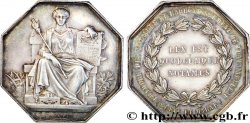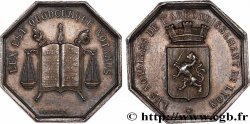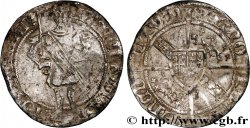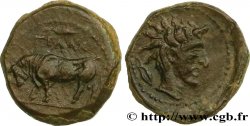Live auction - fjt_207260 - NOTAIRES DU XIXe SIECLE Notaires de Château-Thierry 1806
Devi Sign-in ed essere un offerente approvato fare un'offerta, Login per fare offerte. Conti sono soggetti ad approvazione e di approvazione sono raggiunti entro 48 ore. Non aspettare fino al giorno di una vendita si chiude per registrarti.Confermando la tua offerta su questo oggetto ti impegni ad un contratto legalmente vincolante per l'acquisto di questo prodotto e fare clic su «offerta» costituisce accettazione dei termini di utilizzo de live auctions cgb.fr.
Offerta deve essere collocato in euro gli importi interi vendita only.The si chiuderà al momento sulla descrizione dell'oggetto, eventuali offerte pervenute al sito dopo l'orario di chiusura non verranno eseguite. Volte transmition possono variare e le offerte potrebbero essere respinto se si attende per gli ultimi secondi. Per ulteriori informazioni ckeck le FAQ Live auction.
Le offerte vincenti saranno sottomesse ai 18% per spese di compartecipazione alla vendita.
Le offerte vincenti saranno sottomesse ai 18% per spese di compartecipazione alla vendita.
| Valutazione : | 450 € |
| Prezzo : | no offerta |
| Offerta maxima : | no offerta |
| Data di fine vendita : | 25 giugno 2024 16:55:26 |
Tipo : Notaires de Château-Thierry
Data: 1806
Metallo : argento
Diametro : 32,50 mm
Asse di coniazione : 12 h.
Orlo : cannelée
Grado di rarità : R2
N° nelle opere di riferimento :
Diritto
Titolatura diritto : MRS LES NOTRES DE L'ARROND. DE CHATEAU - THIERRY.
Descrittivo diritto : Armes royales couronnées sur main de justice et sceptre fleurdelisé croisés, entourées des colliers des Ordres et enveloppées du manteau royal. Signé Tiolier.
Rovescio
Titolatura rovescio : LEX EST QUODCUMQUE NOTAMUS ; À L'EXERGUE : 1806.
Descrittivo rovescio : Le gnomon avec portrait impérial difformé.
Commento
On doit noter, et il est bien visible sur cet exemplaire, que la boule qui surmonte le gnomon portait un portrait de l’empereur qui a été difformé dans le coin. Ce détail aura généralement échappé aux contemporains comme il a échappé à Maître Lerouge, puisqu’il existe deux modèles du jeton pour la Restauration, avec le portrait de l’empereur et le coin modifié pour l’oblitérer.
On peut supposer que la première distribution de jetons se fit avec le revers “au portrait”, que cette incongruité - sous la Restauration - fut remarquée et que les distributions suivantes se firent avec des jetons frappés avec un coin apuré.
La devise "Lex est quodcumque notamus" est une création du père Ménestrier en 1686 pour les secrétaires du roi qui ne s'en sont jamais servi. L'invention fut reprise par les notaires de Paris puis ensuite par les notaires de Province.
It should be noted, and it is clearly visible on this example, that the ball surmounting the gnomon bore a portrait of the emperor that was deformed in the corner. This detail will generally have escaped contemporaries as it escaped Maître Lerouge, since there are two models of the token for the Restoration, with the portrait of the emperor and the die modified to obliterate it. We can assume that the first distribution of tokens was made with the reverse “with the portrait”, that this incongruity - under the Restoration - was noticed and that the following distributions were made with tokens struck with a purified die. The motto \\\"Lex est quodcumque notamus\\\" was a creation of Father Ménestrier in 1686 for the king's secretaries who never used it. The invention was taken up by the notaries of Paris and then by the notaries of the Province
On peut supposer que la première distribution de jetons se fit avec le revers “au portrait”, que cette incongruité - sous la Restauration - fut remarquée et que les distributions suivantes se firent avec des jetons frappés avec un coin apuré.
La devise "Lex est quodcumque notamus" est une création du père Ménestrier en 1686 pour les secrétaires du roi qui ne s'en sont jamais servi. L'invention fut reprise par les notaires de Paris puis ensuite par les notaires de Province.
It should be noted, and it is clearly visible on this example, that the ball surmounting the gnomon bore a portrait of the emperor that was deformed in the corner. This detail will generally have escaped contemporaries as it escaped Maître Lerouge, since there are two models of the token for the Restoration, with the portrait of the emperor and the die modified to obliterate it. We can assume that the first distribution of tokens was made with the reverse “with the portrait”, that this incongruity - under the Restoration - was noticed and that the following distributions were made with tokens struck with a purified die. The motto \\\"Lex est quodcumque notamus\\\" was a creation of Father Ménestrier in 1686 for the king's secretaries who never used it. The invention was taken up by the notaries of Paris and then by the notaries of the Province








 Segnalare un errore
Segnalare un errore Stampate la pagina
Stampate la pagina Condividi mia selezione
Condividi mia selezione Fai una domanda
Fai una domanda Consegnare / vendere
Consegnare / vendere
 Descrittivo
Descrittivo















